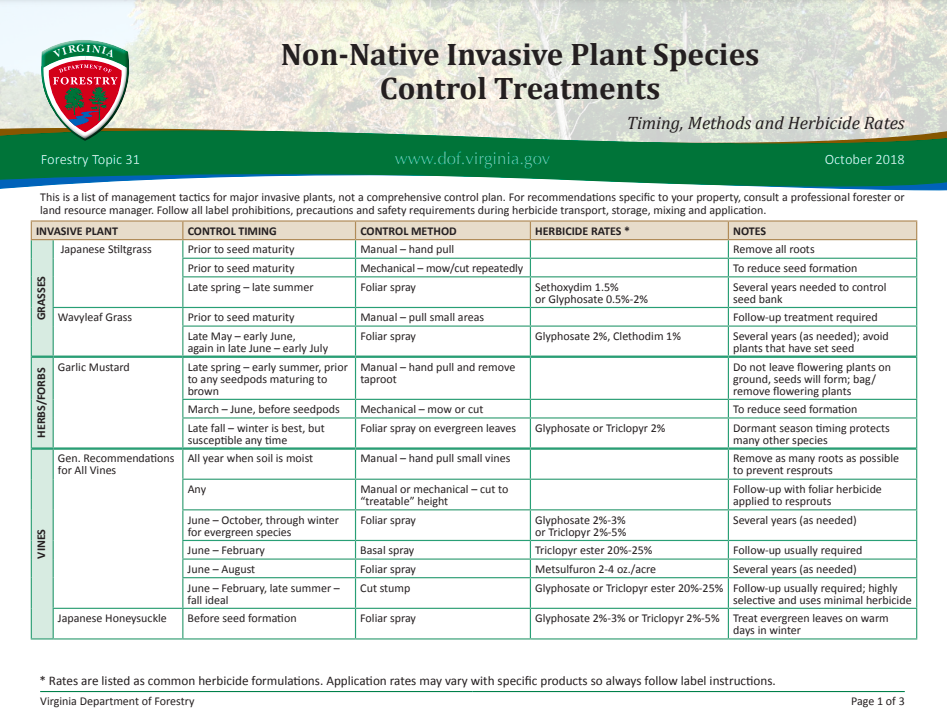
Control Methods
Photo: LIRA volunteers learning Basal Bark method for removing Tree-of-heaven saplings
SAFETY FIRST!
Always wear your Personal Protective Equipment (PPE). Long sleeves, long pants, socks, boots or closed-toe shoes, hat, gloves, safety glasses, and tick protection.
Manual and Mechanical Control Methods
Many invasive plants can be controlled manually or mechanically. These methods include:
hand pulling
digging or grubbing
cutting
weed whacking
mowing
smothering
tarping/solarization
grazing
Check out our Invasive Plant ID & Control app for the recommended methods for each plant.
Best Management Practices for Non-Chemical Weed Control – California Invasive Plant Council
This guide from the California Invasive Plant Council details 21 commonly used non-chemical invasive control techniques and biological control agents for 18 invasive species/species groups.
Chemical Methods
NOTE: Herbicides, and other chemicals and mechanical control equipment, are inherently dangerous. They should be used by trained experts and/or with much caution. If you choose to use herbicides or mechanical equipment, always read and follow the herbicide label and herbicide/equipment safety precautions. Seek professional assistance or training whenever possible.
Blue Ridge PRISM supports the safe and proper use of herbicides only when they are necessary. If you choose to use herbicides to control invasive plants, be cautious when using them. Read and understand the herbicide label prior to use. Use the correct amount and the correct concentration at the correct time.
Blue Ridge PRISM collaborated with the Virginia Department of Forestry (DOF) to create an easy-to-use chart that includes DOF’s control recommendations using manual, mechanical, and chemical control techniques.
Understanding Herbicide Labels
What is the label?
A label is the written, printed, or graphic matter on, or attached to, the pesticide or device or any of its containers or wrappers. It contains all of the information you need to know to use the product correctly. Read the herbicide label carefully and in its entirety. The label on the herbicide product is a legal document and using the product inconsistent with label instructions is a violation of the law. Always follow label instructions.
Remember: the label is the law.
What should I pay attention to when reading the label?
Read the label carefully and in its entirety paying particular attention to the product name, active ingredients, first aid, environmental hazards, signal words, directions for use, directions for mixing, storage and disposal instructions, and required personal protective equipment.
Learn more about reading a label from Penn State Extension, What You Need to Know about Reading a Pesticide Label.
I need help finding a product label. Where can I look online?
CDMS Label Database — Search for an herbicide label by brand name or manufacturer OR often a quick online search of the brand name or manufacturer will generate the product label and SDS sheet.
UPDATE:
Effective July 1, 2024, Virginia has new legislation allowing unpaid volunteers to utilize nonrestricted herbicides, while under the supervision of a licensed commercial applicator, on properties owned by local political subdivisions. Learn more
Mixing and Applying Herbicides
Although ready-to-use (“RTU”) herbicides can be purchased, if you are controlling a lot of invasive plants, you will save money by purchasing concentrated herbicides and diluting according to the label instructions. Use extreme caution when mixing herbicides. Before mixing any herbicide, READ THE LABEL.
Safety First
Use PPE as indicated by the herbicide label
Work in a well-ventilated place when mixing herbicides
Have on hand: heavy plastic garbage bags, a shovel, and chemical spill absorber (kitty litter)
On-site access to water for First Aid OR carry emergency eye wash and a dedicated container of clean water for hand washing
Wash hands before eating, drinking, or using the restroom (or using tobacco)
Use a dedicated measuring cup and funnel for mixing; label it to avoid confusion with equipment used for measuring food
Pour liquids carefully to minimize splashing
Label all mixed herbicide with the date, chemical name, and the % concentration
Wash all measuring equipment before storage (not in a kitchen or bathroom sink)
Launder contaminated clothing separately from other clothing
Mixing a Backpack Sprayer
When using adjuvants refer to the label – look for ‘Mixing Order’ or ‘Mixing Directions’
Some herbicides may require agitation as you mix
Defer to label instructions, but generally:
fill the sprayer half-full of clean water; add surfactant if the product does not have one; then add a dye; then carefully measure and add the herbicide;
rinse the measuring equipment three times and add the rinsate to the tank solution;
top the backpack sprayer with water to the desired amount.
Mixing a Handheld Sprayer, Dauber or Drip Bottle
Mix larger amount in a separate container – following above tips for mixing a backpack sprayer
Use a funnel to carefully transfer mixed herbicide to the desired applicator
Individual bottles can be mixed for small jobs
More Herbicide Resources
Do I Need to be Certified to Apply Pesticides in Virginia? – Virginia Department of Agriculture and Consumer Services
What is an Adjuvant? – Invasive.org
Herbicide Names: Common Names and Other Trade Names – B. Tickes, University of Arizona
Forest Herbicide Characteristics – University of Florida | IFAS Extension









